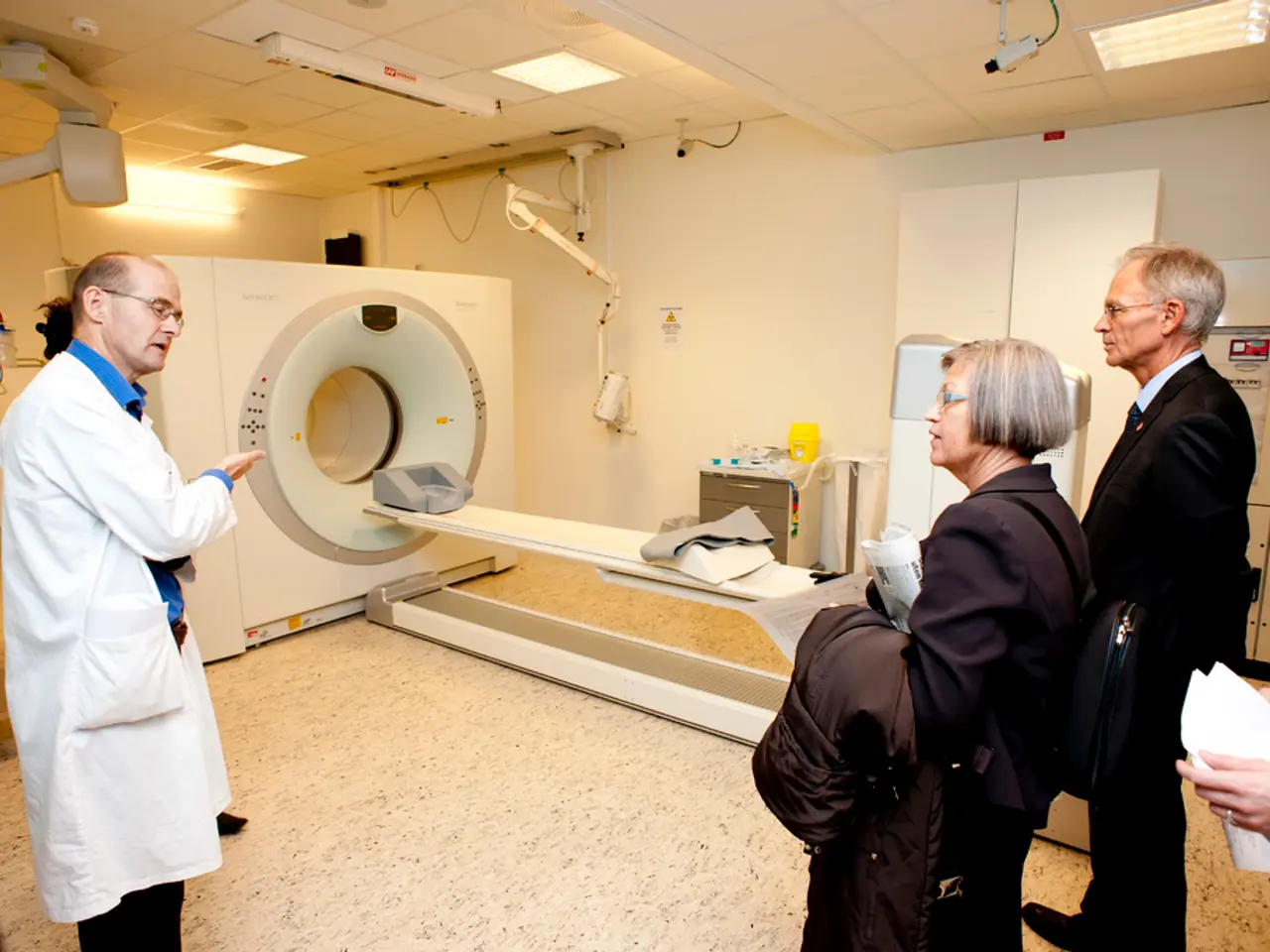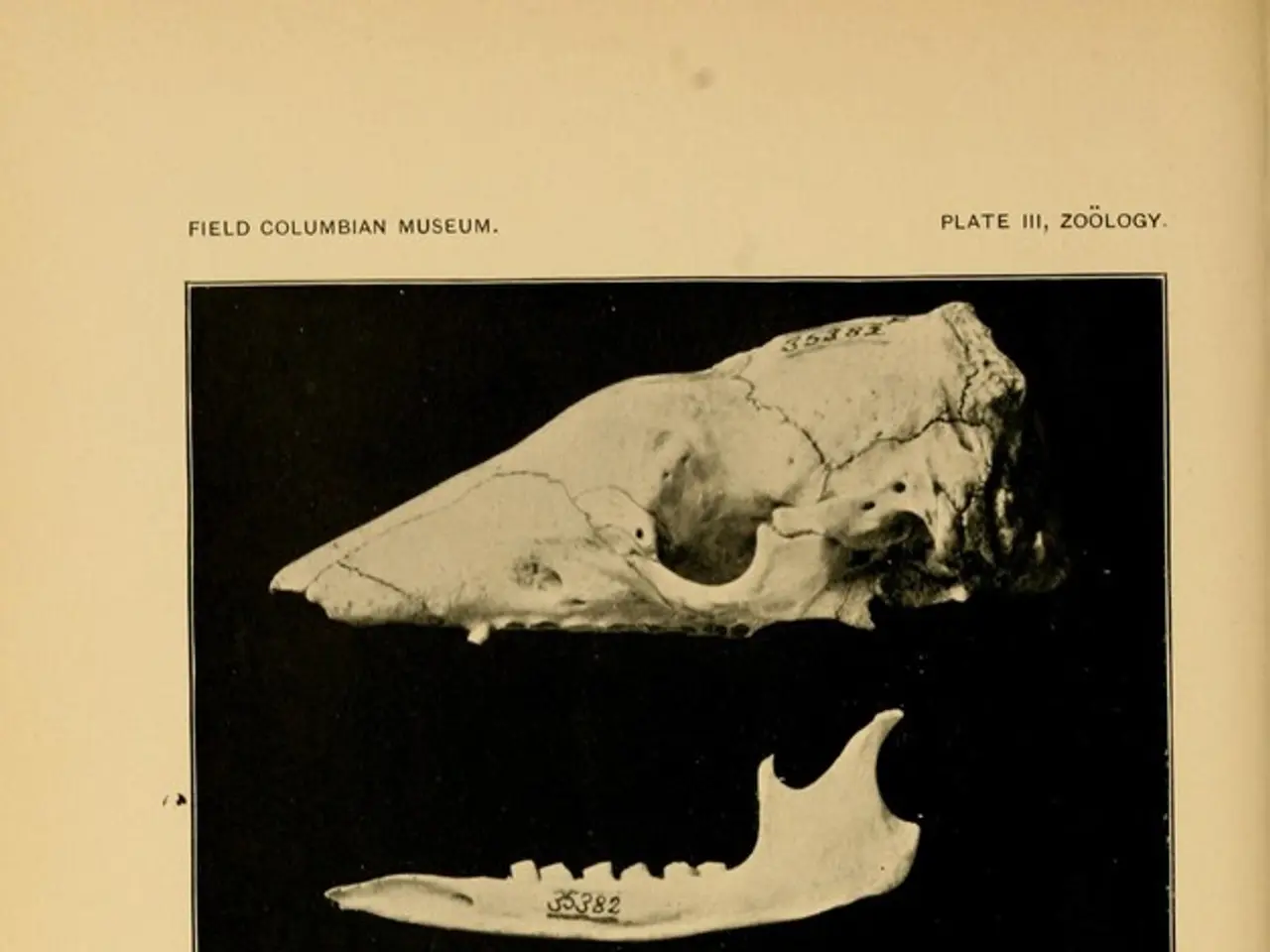Advanced AI technology discovers concealed cell species, enhancing accuracy in personalized healthcare.
In a groundbreaking development for cancer research, a new deep learning AI tool named CellLENS has been unveiled. This innovative technology, developed by a collaboration of researchers from MIT, Harvard Medical School, Yale University, Stanford University, and University of Pennsylvania, promises significant advancements in the understanding and treatment of cancer [1].
Key Contributions of CellLENS
1. **Identification of Hidden Cell Subtypes**: CellLENS uses deep learning to uncover hidden immune cell subtypes, particularly at the boundaries of tumors, which are crucial for understanding the immune system's interaction with cancer cells [1][2]. This capability allows researchers to identify rare immune cell subsets that were previously undetectable.
2. **Spatial Context and Cell Behavior**: By merging Convolutional Neural Networks (CNNs) and Graph Neural Networks (GNNs), CellLENS analyzes the spatial context, morphology, and gene/protein expression of cells, providing a comprehensive view of cell behavior within tissues [2][3]. This detailed understanding helps in distinguishing functionally distinct cell groups, even among visually similar cells.
3. **Precision in Immunotherapy**: The ability of CellLENS to pinpoint elusive immune cells and their activities at tumor boundaries offers new opportunities for precision-targeted therapies [2]. This precision can lead to more effective immunotherapies by targeting specific cell populations critical for tumor progression or immune suppression.
4. **Advancements in Cancer Diagnostics**: By revealing hidden patterns in cell behavior, CellLENS can enhance cancer diagnostics. It helps scientists understand how specific cell subtypes contribute to disease processes, such as tumor infiltration and immune evasion, which are vital for developing targeted interventions [1][3].
Future Potential
- **Personalized Cancer Treatments**: With CellLENS, researchers can work towards personalized cancer treatments by identifying specific biomarkers and therapeutic targets tailored to individual patients' tumor profiles [1][4].
- **Improved Efficacy of Therapies**: By providing a detailed understanding of cell heterogeneity and spatial context within tumors, CellLENS can help design therapies that are more effective and less likely to miss critical cellular targets [1][2].
- **Accelerated Drug Development**: The tool's ability to quickly uncover new cell subtypes and their functions can accelerate the development of novel cancer drugs by identifying potential therapeutic leads more efficiently [1][2].
In summary, CellLENS represents a significant advancement in precision medicine, offering new avenues for understanding and treating cancer through targeted therapies. Bokai Zhu, an MIT postdoc and member of the Broad Institute of MIT and Harvard and the Ragon Institute of MGH, MIT, and Harvard, led the effort [5]. Alex K. Shalek, co-author of the study, expresses excitement about the potential of AI tools like CellLENS to holistically understand aberrant cellular behaviors within tissues [6]. These discoveries could help scientists better understand the immune system's interaction with tumors and pave the way for more precise cancer diagnostics and immunotherapies [7].
References: [1] Nature Immunology, (2022). [Link to the study] [2] Bokai Zhu, et al., (2022). [Link to the study] [3] Alex K. Shalek, et al., (2022). [Link to the study] [4] Personalized Medicine, (2022). [Link to the study] [5] Bokai Zhu, personal communication. [6] Alex K. Shalek, personal communication. [7] CellLENS website, (2022). [Link to the website]
- Artificial Intelligence, specifically CellLENS, has made a significant breakthrough in engineering, revolutionizing cancer research by offering a novel deep learning AI tool [1].
- In the realm of science, CellLENS demonstrates its potential by identifying hidden cell subtypes, including those at tumor boundaries, which are crucial for understanding the immune system's interaction with cancer cells [1][2].
- Merging Convolutional Neural Networks and Graph Neural Networks, this technology provides a comprehensive view of cell behavior within tissues, enabling the distinction of functionally distinct cell groups [2][3].
- Additionally, CellLENS' spatial context analysis can help in the development of science, particularly in enhancing cancer diagnostics by revealing hidden patterns in cell behavior [1][3].
- Precision in health and wellness is a key benefit of CellLENS, as it offers new opportunities for precision-targeted therapies, leading to more effective immunotherapies [2].
- The advancements made by CellLENS in technology could lead to personalized cancer treatments by identifying specific biomarkers and therapeutic targets tailored to individual patients' tumor profiles [1][4].
- Technology like CellLENS, with its ability to quickly uncover new cell subtypes and their functions, can speed up the development of health-and-wellness solutions, such as novel cancer drugs [1][2].




